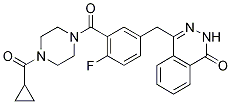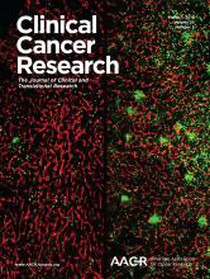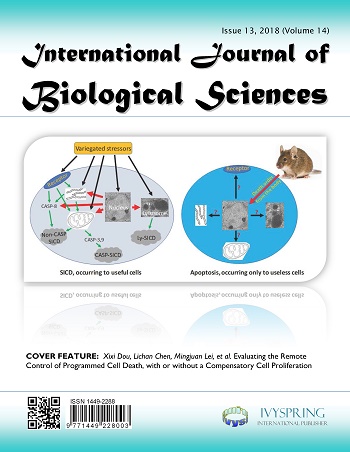All AbMole products are for research use only, cannot be used for human consumption.

AZD 2281 (Olaparib, KU-0059436) is a novel, potent orally active PARP (poly ADP-ribose polymerase) inhibitorwith IC50 of 5 and 1 nM for PARP-1and PARP-2 respectively. AZD 2281 (Olaparib, KU-0059436) acts as an inhibitor of the enzyme Poly ADP ribose polymerase (PARP) and is one of the first PARP inhibitors.It induces cancer specific synthetic lethality in homologous recombination repair defective cells, including BRCA-deficient tumors. Olaparib is an autophagy and mitophagy activator.

Molecular Cancer. 2024 Aug 14;23(1):166.
The CD47/TSP-1 axis: a promising avenue for ovarian cancer treatment and biomarker research
AZD2281 (Olaparib) purchased from AbMole

Advanced Science. 2024 Aug 13.
Dissecting the Distinct Tumor Microenvironments of HRD and HRP Ovarian Cancer: Implications for Targeted Therapies to Overcome PARPi Resistance in HRD Tumors and Refractoriness in HRP Tumors
AZD2281 (Olaparib) purchased from AbMole

Journal of Cancer. 2024 Jan;15(3):699-713.
Radiosensitization of Osteosarcoma Cells Using the PARP Inhibitor Olaparib Combined with X-rays or Carbon Ions
AZD2281 (Olaparib) purchased from AbMole

bioRxiv. 2024 Sep 16.
DNA Damage Response Deficiency Enhances Neuroblastoma Progression and Sensitivity to Combination PARP and ATR Inhibition
AZD2281 (Olaparib) purchased from AbMole

Patent. CN117679418A 2024 Mar 12.
Patent. CN117679418A
AZD2281 (Olaparib) purchased from AbMole

Sci Adv. 2022 May 13;8(19):eabn1229.
Translesion DNA synthesis mediates acquired resistance to olaparib plus temozolomide in small cell lung cancer
AZD2281 (Olaparib) purchased from AbMole

Free Radic Biol Med. 2022 Jan;178:174-188.
DNA damage response proteins synergistically affect the cancer prognosis and resistance
AZD2281 (Olaparib) purchased from AbMole

Radiat Oncol. 2022 Aug 19;17(1):144.
Ku70 affects the frequency of chromosome translocation in human lymphocytes after radiation and T-cell acute lymphoblastic leukemia
AZD2281 (Olaparib) purchased from AbMole

BMC Biol. 2021 May 20;19(1):108.
Very long intergenic non-coding (vlinc) RNAs directly regulate multiple genes in cis and trans
AZD2281 (Olaparib) purchased from AbMole

Int J Biol Sci. 2021 Jan 31;17(3):689-701.
Preclinical evaluation of radiation therapy of BRCA1-associated mammary tumors using a mouse model
AZD2281 (Olaparib) purchased from AbMole

Cell. 2019 Jun 13;177(7):1903-1914.e14.
Visualizing Engrafted Human Cancer and Therapy Responses in Immunodeficient Zebrafish.
AZD2281 (Olaparib) purchased from AbMole

Clin Cancer Res. 2019 Mar 1;25(5):1664-1675.
The Ewing Family of Tumors Relies on BCL-2 and BCL-XL to Escape PARP Inhibitor Toxicity.
AZD2281 (Olaparib) purchased from AbMole

Int J Biol Sci. 2018 Oct 3;14(13):1769-1781.
Inhibition of AKT suppresses the initiation and progression of BRCA1-associated mammary tumors.
AZD2281 (Olaparib) purchased from AbMole
| Cell Experiment | |
|---|---|
| Cell lines | SW620 colorectal cell line |
| Preparation method | Potentiation of MMS Cytotoxicity by 47 Determined by the Use of Sulforhodamine B Cell Growth Assays. SW620 cells were seeded in 96-well plates and were left to attach overnight. Cells were preincubated with vehicle control (DMSO) or with a single concentration of KU-0059436 (1, 3, 10, 30, 100 or 300 nM) for 1 h before the addition of increasing concentrations of MMS. Cells were incubated in the presence of each drug combination for 4 days before cell growth was quantified by the use of an SRB assay.44 Data were calculated from triplicate wells as the mean percentage of cell growth relative to KU-0059436-only wells, and (SE and IC50 were calculated by the use of XL-FIT 4 software. SW620 cells showed <24% growth inhibition (>76% cell growth) when only KU-0059436 was used at concentrations below 300 nM (data not shown). |
| Concentrations | 1, 3, 10, 100 and 300 nM |
| Incubation time | 4 days |
| Animal Experiment | |
|---|---|
| Animal models | mouse bearing SW620 xenografted tumors |
| Formulation | methylcellulose/PBS |
| Dosages | 10 mg/kg once daily for 5 consecutive days |
| Administration | orally |
| Molecular Weight | 434.46 |
| Formula | C24H23FN4O3 |
| CAS Number | 763113-22-0 |
| Solubility (25°C) | DMSO 90 mg/mL DMF 45 mg/mL |
| Storage |
Powder -20°C 3 years ; 4°C 2 years In solvent -80°C 6 months ; -20°C 1 month |
[5] Marchetti et al. Expert Opin Investig Drugs. Olaparib , PARP1 inhibitor in ovarian cancer.
| Related PARP Products |
|---|
| 2-Methylquinazolin-4-ol
2-Methylquinazolin-4-ol is a potent competitive poly(ADP-ribose) synthetase inhibitor, with a Ki of 1.1 μM. 2-Methylquinazolin-4-ol mammalian aspartate transcarbamylase (ATCase) inhibitor, with IC50 of 0.20 mM. |
| DPQ
DPQ is a potent PARP-1 inhibitor. |
| OUL232
OUL232 is a potent inhibitor of mono-ARTs PARP7, PARP10, PARP11, PARP12, PARP14, and PARP15. |
| AZ3391
AZ3391 is a potent inhibitor of PARP. |
| PARP1-IN-5
PARP1-IN-5 is a low toxicity, orally active, potent and selective PARP-1 inhibitor (IC50 =14.7 nM). |
All AbMole products are for research use only, cannot be used for human consumption or veterinary use. We do not provide products or services to individuals. Please comply with the intended use and do not use AbMole products for any other purpose.


Products are for research use only. Not for human use. We do not sell to patients.
© Copyright 2010-2024 AbMole BioScience. All Rights Reserved.
